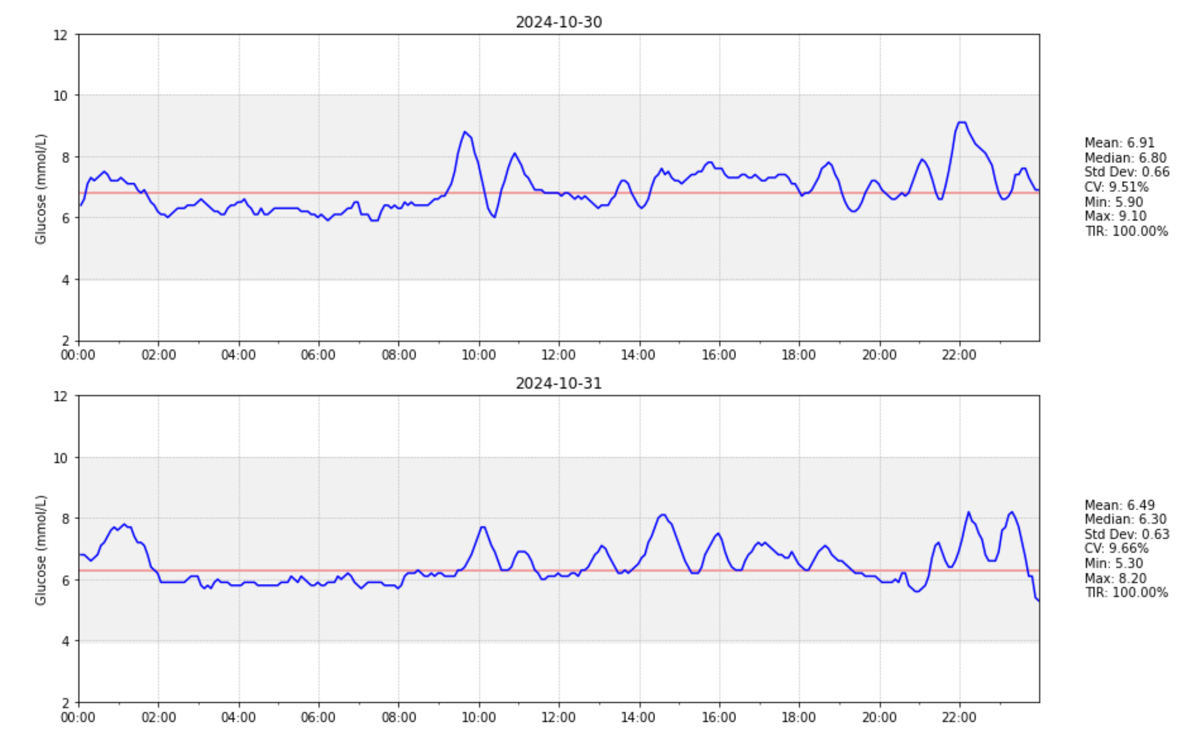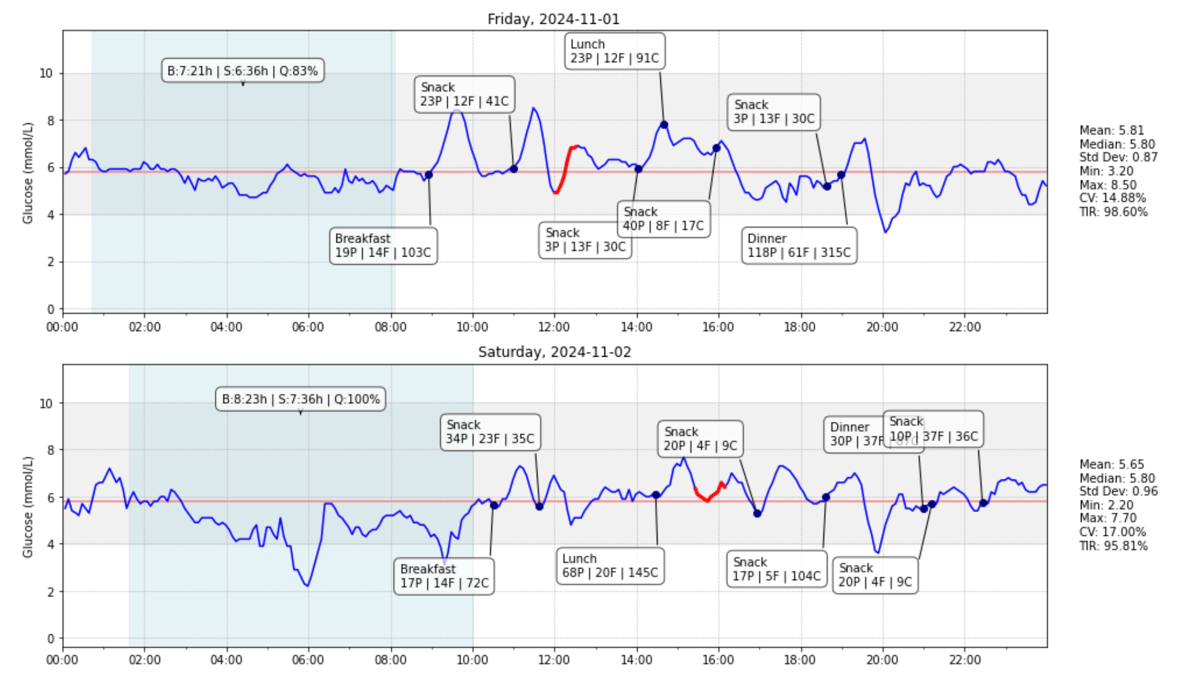Last year I put a Continuous Glucose Monitor (CGM) sensor, specifically the Abbott Freestyle Libre 3, on my left arm. Why? I wanted to optimize my nutrition for endurance cycling competitions. Where I live, the sensor is easy to get—without any medical prescription—and even easier to use. Unfortunately, Abbott’s FreeStyle LibreLink app is less than optimal (3,250 other people with an average rating of 2.9/5.0 seem to agree). In their defense, the web app LibreView does offer some nice reports which can be generated as PDFs—not very dynamic, but still something! What I had in mind was more in the fashion of the Ultrahuman M1 dashboard. Unfortunately, I wasn’t allowed to use my Libre sensor (EU firmware) with their app (yes, I spoke to customer service).
At that point, I wasn’t left with much enthusiasm, only a coin-sized sensor in my arm. The LibreView website fortunately lets you download most of your (own) data in a CSV report (there is also a reverse engineered API), which is nice. So that’s what I did: download the data, pd.read_csv() it into my notebook, calculate summary statistics, and plot the values.

- Blood sugar from LibreView: Measurement timestamps + glucose values
- Nutrition from MacroFactor: Meal timestamps + macronutrients (carbs, protein, and fat)
- Sleep data from Sleep Cycle: Sleep start timestamp + time in bed + time asleep (+ sleep quality, which is a proprietary measure calculated by the app)
- Cardio workouts from Garmin: Workout start timestamp + workout duration
- Strength workouts from Hevy: Workout start timestamp + workout duration

I asked Claude to create some sample data and streamline the functions to reduce dependencies on the specific data sources I used. The resulting notebook is a comprehensive CGM data analysis tool that loads and processes glucose readings alongside lifestyle data (nutrition, workouts, and sleep), then creates an integrated dashboard for visualization. The code handles data preprocessing including interpolation of missing glucose values, timeline synchronization across different data sources, and statistical analysis with key metrics like time-in-range and coefficient of variation. The main output is a day-by-day dashboard that overlays workout periods, nutrition events, and sleep phases onto continuous glucose monitoring data, enabling users to identify patterns and correlations between lifestyle factors and blood sugar responses.
You can find the complete notebook as well as the sample data in my GitHub repository.